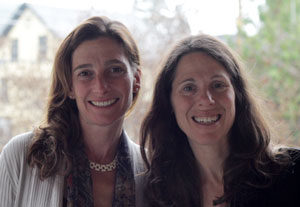Mar 01, 2017
Vermont Care Network Advocates for Behavioral Health and Developmental Disability Agencies
by Jenn Lukens
 Nearly
one in five American adults have a diagnosable mental
or behavioral health disorder. Over the past 20 years,
the state of Vermont has been proactive in addressing
issues linked to such diagnoses, like stigma. Numerous
nonprofit, community-based agencies have joined the
effort to provide services for people with developmental
disabilities, mental health conditions, and substance use
disorders.
Nearly
one in five American adults have a diagnosable mental
or behavioral health disorder. Over the past 20 years,
the state of Vermont has been proactive in addressing
issues linked to such diagnoses, like stigma. Numerous
nonprofit, community-based agencies have joined the
effort to provide services for people with developmental
disabilities, mental health conditions, and substance use
disorders.

In 1994, a group of community mental health agencies started the Vermont Care Network (VCN), formerly known as the Behavioral Health Network of Vermont, to improve business functions and allow for contracting across agencies. Motivated by the promise of resources, networking, and other new opportunities, agencies lined up to take part.
Tides turned in 2011 when conflicting views drove some agencies to back out of VCN. Project Manager Simone Rueschemeyer soon took over as executive director and started making plans to build VCN up again. At that time, the Vermont Council of Developmental and Mental Health Services (the Council), the state's trade association, was operating with a mission similar to VCN's. "We were addressing similar issues, but, due to the fact that the organizations were not working together, the result was duplication of work and inefficiencies," recalled Rueschemeyer.
The Merging of Two Organizations
 Rueschemeyer and
the Council's executive director, Julie Tessler, started
talking about the possibility of collaborating. In 2012,
the two organizations co-located and launched Vermont Care
Partners (VCP) as their marketing umbrella
organization with a mission "to provide statewide
leadership for an integrated, high-quality system of
comprehensive services and supports."
Rueschemeyer and
the Council's executive director, Julie Tessler, started
talking about the possibility of collaborating. In 2012,
the two organizations co-located and launched Vermont Care
Partners (VCP) as their marketing umbrella
organization with a mission "to provide statewide
leadership for an integrated, high-quality system of
comprehensive services and supports."
Behavioral health and developmental disability agencies now have a single location that provides assistance in their work. "It was a good move for the state, for us, and for our agencies," said Rueschemeyer.

While there is a significant amount of overlap, VCN and the Council have different functions within VCP. The Council serves as the trade association – developing policy, agency networking, and advocating on a state and federal level. Vermont Care Network functions as the business arm – responsible for grant management, training, health information technology innovation, bi-directional care (integrating mental health, substance use, and developmental disability services with primary care), securing return on investment, data quality, and more. In exchange for a yearly fee, agencies and their clients receive these services through VCP.
All of our work is for the agencies we represent. The staff work seamlessly together now on behalf of their network members. It took a while, but it has really changed.
Rueschemeyer reported that the merger has had many benefits, including positively changing the relationship between the two organizations. "All of our work is for the agencies we represent. The staff work seamlessly together now on behalf of their network members. It took a while, but it has really changed," she said.
FORHP Grant Applications Build Sustainability
Due to federal and state budget cuts, demand for VCN's services has increased in the past few years. The following grant funding from the Federal Office of Rural Health Policy (FORHP) has allowed them to expand their services for 16 partner agencies, 13,000 agency workers, and nearly 50,000 Vermont residents.
FORHP Grants Received by the Vermont Care Network
| Grant | Focus of Grant | Project Period | Grant Amount |
| Network Development | Behavioral health | 2008 – 2012 | $540,000 |
| Outreach | Bi-directional care | 2012 – 2015 | $444,315 |
| Network Development | Technological advancement | 2014 – 2017 | $899,549 |
"We are immensely grateful for the FORHP grants as they have enabled us to lay a solid foundation, test models of care delivery, be innovative with healthcare technology, and leverage other financial opportunities," said Rueschemeyer. "We have a group of agencies that couldn't move as easily before as they can now."
Vermont Care Network has received two Network Development Grants from FORHP. The first allowed them to establish some structure for their office and agencies. The second provided a way to achieve population health goals through technology (for example, developing a data repository, enhancing data quality, and developing a Center of Excellence plan for member agencies).
VCN's first application turned heads at FORHP. "It was very innovative, and we could tell they had a solid vision and objectives that were really realistic," recalled Christina Villalobos, now an analyst in Health Resources & Services Administration's (HRSA) Bureau of Primary Health Care and until recently, FORHP project officer for VCN's three grants. "It definitely made them competitive for continued funding."
Rueschemeyer said that FORHP's requirements have been vital to VCN's sustainability. The extensive strategic and business plans they developed over the years are still the ones that guide their work today. "Sometimes you draft documents just because they are required by the grant, but FORHP's requirements were extremely helpful and they have pushed us…to do more formal evaluations, business planning, etcetera," said Rueschemeyer.
Reaching Wellness through Integration
In 2012, Vermont Care Network received the FORHP Outreach Grant for their work with integrated bi-directional care, a topic of growing interest in Vermont. A partnership between a Federally Qualified Health Center (FQHC) and a mental health center became the pilot for this model. Primary care services were offered to clients at the mental health center with the purpose of improving access to and coordination between the agency and medical facility.
"There is lots of research on comorbidities and the impact of one's mental wellbeing on their physical health and vice versa," said Rueschemeyer. "Access to the right services at the right time in the right place is essential to truly addressing one's health and wellbeing in a person-centered and directed manner."
In rural areas, everyone is vying for the same things. They strive to work together with developmental, substance use disorder, home health, and other agencies to identify expertise and how it can be used to focus on the entire health of their population.
Rueschemeyer says that such cross-sector collaboration is more common in Vermont's smaller communities where resources are scarcer. "In rural areas, everyone is vying for the same things. They strive to work together with developmental, substance use disorder, home health, and other agencies to identify expertise and how it can be used to focus on the entire health of their population."

This integration concept is not new to Vermont. Since the early 90s, the state has moved toward integrating behavioral health programs within public school systems rather than sending students with special needs to separate schools. The shift had a direct impact over time. Employment rates for those diagnosed with behavioral, psychiatric, and substance use disorder rose to 26%, surpassing the national average for this population.
"A lot of incredible work was being done. It's exciting to see…people with those disabilities living integrated lives in their communities," commented Rueschemeyer who also emphasized that integration should extend beyond mental health and primary care. VCN's agencies provide more than 50% of social services to their communities, meeting needs in schools, homes, and at places of employment. "True integration focuses on the social impacts of one's health and takes into consideration poverty, domestic violence, living situations, employment, diet, and more," said Rueschemeyer.
Staying on Top of Health Reform
Health reform is a priority on most VCN meeting agendas. The staff have been working together to create a sustainable delivery system that helps Vermont achieve the Triple Aim. "Most network agencies just do not have the infrastructure or resources to meet increasing expectations from state and legislative entities for streamlined data collection and outcomes reporting," said Rueschemeyer.
Vermont Care Network prepares its agencies for policy changes, helps them collect and analyze required data, and advocates for fair reimbursement rates. It is also piloting a Center of Excellence program that will assist agencies in documenting the value and quality they provide to their clients.
Wherever health reform ends up, there is so much that we can do to make sure that our agencies can participate and thrive in a new environment. That's a huge focus of what we are doing.
While they are trying to stay on top of the changes, Rueschemeyer compares health reform to a moving dartboard. "Wherever health reform ends up, there is so much that we can do to make sure that our agencies can participate and thrive in a new environment. That's a huge focus of what we are doing."
Villalobos sees VCN as a leader in its field, which is why she connects Rueschemeyer with newer grantees. "Vermont Care Network has experienced a lot of the same barriers that these younger networks have come across. They have always been willing to share best practices and lessons learned, not just successes but challenges," said Villalobos who emphasizes that it takes teamwork to make a network like this succeed.
She added, "Simone has been able to connect the dots with the state players who have similar goals and missions. Under her leadership, she makes it clear that it's not a competition, that they are in this together, and that these are initiatives from which both can benefit."
